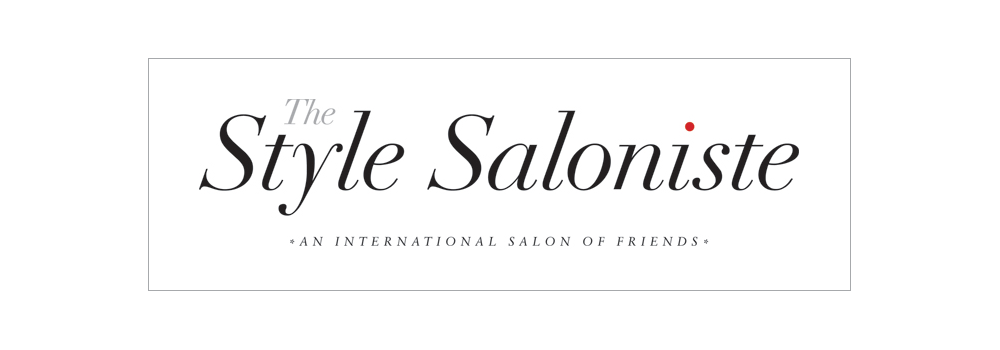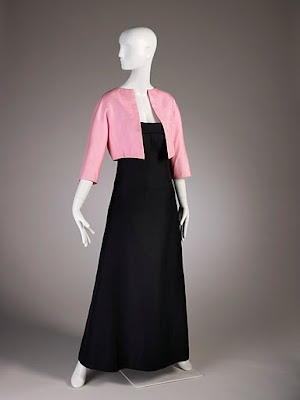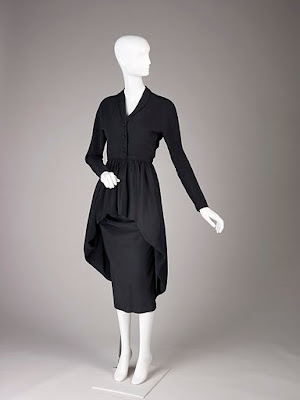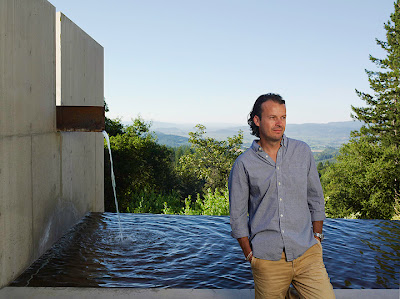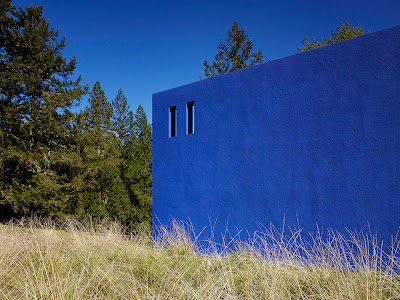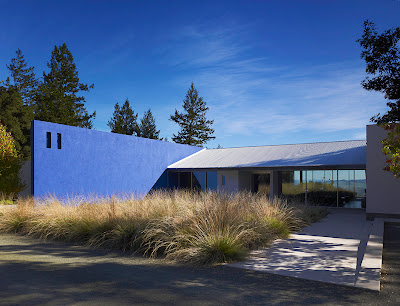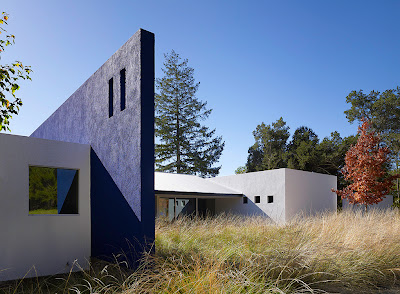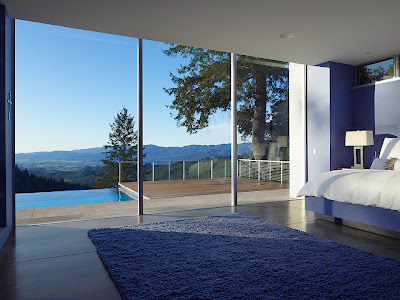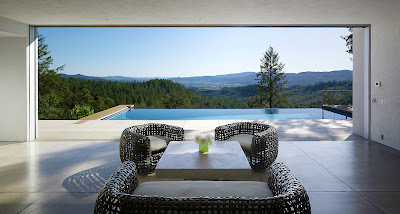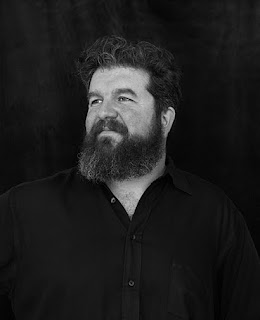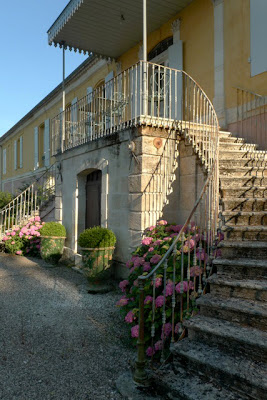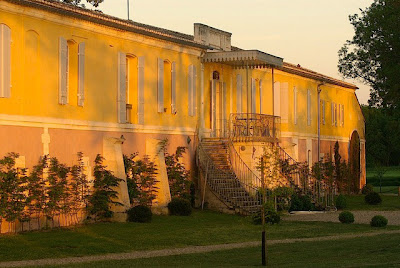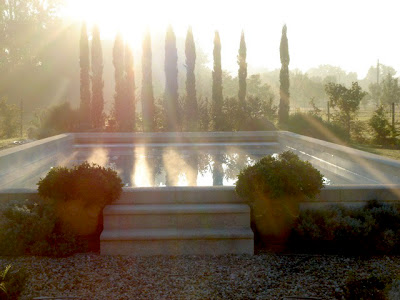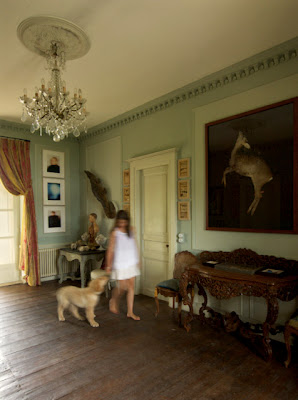The dazzling Cristobal Balenciaga exhibit opens at the de Young Museum in San Francisco this week.
I’m inviting you to come with me to the grand opening gala (see exclusive pictures of Anna Wintour, Hamish Bowles, Marissa Mayer, Maria Belo, Vanessa and Billy Getty, Gwyneth Paltrow and all their glam pals and entourages). Very insider.
I’ll show you swoon-inducing classic fashion images of highlights of this superb show, curated by the great Hamish Bowles.
Pour a glass of wine, put on your Balenciaga cocktail hat, and join me for a special preview and party pix, exclusive to THE STYLE SALONISTE.
 |
Cocktail hat of ivory silk satin, 1953. Originally published in Vogue, October 15, 1953. Photo: John Rawlings. |
Kiss! Kiss! Darling!
It was the Balenciaga exhibit’s elegant opening gala last Thursday night at the de Young.
In the crush: Anna Wintour, Gwyneth Paltrow, Google VP Marissa Mayer, Orlando Bloom, Balthazar Getty, Vanessa and Billy Getty, Becca Cason Thrash, Ali Pincus, Samantha Traina, Juicy Couture founders Pamela Skaist Levy and Gila Nash, Vanessa Carlton, and fabulous talents and stars and philanthropists too glamorous to mention.
Guests nibbled caviar and watched Flamenco dancers, then dashed upstairs to see the divine Balenciaga dresses.
Many of the women—Marissa Mayer and Maria Bello notably—wore vintage Balenciaga. Swellegant.
 |
| Hamish Bowles, with his authentic matador cape. |
 |
Billy and Vanessa Getty. Vanessa is wearing sixties Mme. Gres gown from Decades, Los Angeles. |
 |
| Denise Hale in Ralph Rucci. |
 |
| Alison Pincus, co-founder of One Kings Lane, in Nina Ricci. |
 |
| Gwyneth Paltrow with best friend, Kleiner Perkins partner Juliet de Baubigny, wearing Andrew Gn couture. |
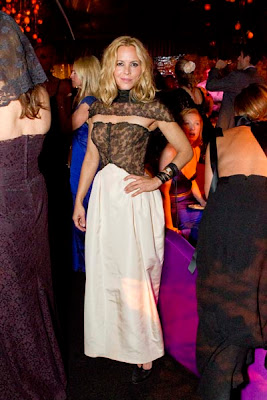 |
| Maria Bello in a pink silk faille Balenciaga gown from 1950. Note her ‘restyled’ Cartier watch, leather-bound and 2011 chic. |
The Genius of Cristobal Balenciaga
'Balenciaga and Spain' at the de Young Museum features 120 fabulous gowns (think Pauline de Rothschild, Doris Duke, the Queen of Belgium) and millinery (cocktail hats, delightful) from international institutions and private collections, many never seen, and some of which have not been publicly exhibited in decades.
Hamish Bowles, European editor at large of Vogue, serves as guest curator.
For an earlier Balenciaga exhibit I wrote about, click here. (Balenciaga, Givenchy, Venet at the Chateau de Haroue, France).
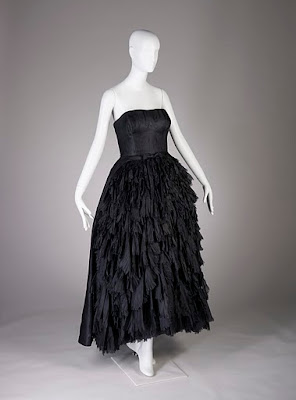 |
| Cristobal Balenciaga Photo by Joe McDonald/F |
The Balenciaga show—which presents eye-watering beading, embroidery, and exquisite woven silks, displays day dresses and ultra-simple tunics and pared-down cocktail frocks. It includes nineteen dresses, hats, and gowns from Hamish Bowles’ own couture collection.
Bowles is the European editor at large for the American edition of Vogue. He joined Vogue in 1992. Bowles is author and co-author of several books including Vogue Living: Houses, Gardens, People; Philip Treacy: “When I Met Isabella”; and Carolina Herrera: Portrait of a Fashion Icon.
He also served as curator for the landmark exhibition Jacqueline Kennedy: The White House Years.
There are some wonderful lessons to learn as we gaze and admire and swoon over Balenciaga’s grand creations.
I love the simplicity of his silhouettes. Nothing fussed over or tragically silly. There is logic—and mad, crazy, divine femininity and flattery in everything he did.
 |
| Cristobal Balenciaga Photo by Joe McDonald/F |
To take away from studying Balenciaga:
Classicism rules.
Classicism rules.
Style is consistency.
I adore his custom-made fabrics—and for him the textiles dictate the shapes and lines.
Note the ultra-feminine cocktail hats. They are so flirty and silly—and make you wish for the return of cocktail hats and cocktail dresses to wear with them.
And chic obviously means no pattern! No prints at all. Nothing trendy or over-the-top or too ‘now’. And again I say—no prints, ever.
Elegance is refusal, said Diane Vreeland. Balenciaga refused.
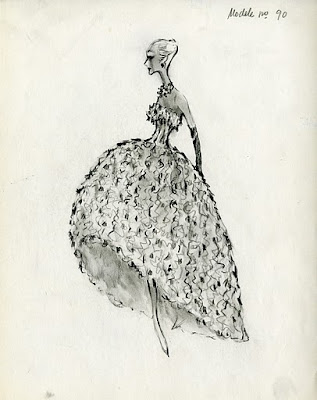 |
| Cristobal Balenciaga Courtesy Balenciaga Archives. |
 |
| Sketch of Balenciaga "Infanta" evening dress; from Vogue Magazine (September 15, 1939). Carl Erickson/C |
Balenciaga aimed for a kind of fashion purity and flattery and simplicity that has influenced every fashion designer since (notably Yves Saint Laurent, Tom Ford, John Galliano, Narciso Rodriguez and Calvin Klein).
In every fashion designer working today—Balenciaga lives.
Bravo to Balenciaga. I can’t wait to return and see the show, again and again.
‘Balenciaga and Spain’
New Rizzoli book on Balenciaga:
And if you can’t attend the San Francisco exhibit, there is the supreme consolation of an exceptionally beautiful new Rizzoli book, Balenciaga and Spain. This entrancing and highly original volume documents all of the designer’s greatest gowns—and the Spanish court dress, fisherman sweaters, ecclesiastical outfits, and traditional Spanish folkloric costumes that influenced his life’s work.
The book is at once a rare insight into Balenciaga’s refined looks—and an historical survey of Spanish art, architecture, textiles, religious life, and color. Highly recommended.
Hamish Bowles produced the book, and commentary throughout is exemplary.
 |
| Cristóbal Balenciaga (circa 1952). © Bettmann/C |
CREDITS:
All party pictures were shot by Drew Altizer, the great social photographer of San Francisco.
To acquire copies and more images visit www.drewaltizer.com.
Special thanks and appreciation to Jami Witek.
MUSEUM DETAILS:
The de Young Museum, designed by Herzog & de Meuron and located in Golden Gate Park, is the fourth most visited art museum in North America. The museum showcases American art from the 17th through the 21st centuries, international contemporary art, textiles, and costumes, and art from the Americas, the Pacific, and Africa.
BALENCIAGA EXHIBIT: Through July 4, 2011.
Note: check on the museum’s website for the online Balenciaga symposium. Four Balenciaga and costume scholars speak in detail of the influences on his design and his Spanish roots.
Visit http://fora.tv/conference/Balenciaga_and_Spain for more information.
Address:
Golden Gate Park
50 Hagiwara Tea Garden Drive
San Francisco, CA 94118
Hours:
Tuesday–Thursday, Saturday and Sunday: 9:30 am–5:15 pm
Friday: 9:30 am–8:45 pm
Closed on Monday
http://deyoung.famsf.org/
415.750.3600
